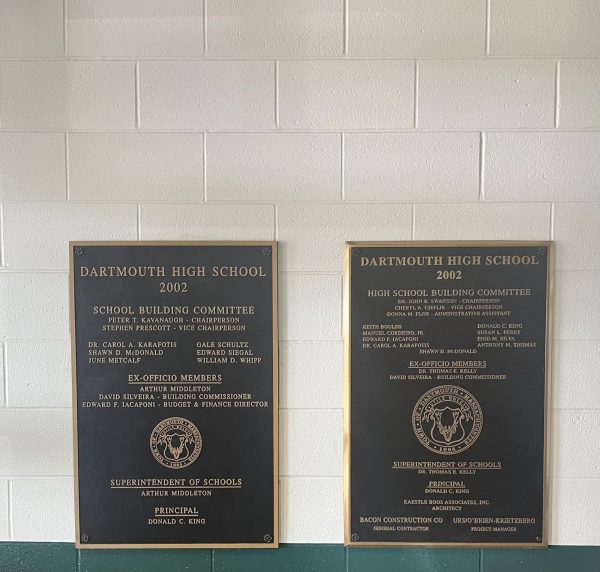Sports fees deconstructed

Before they hit the fields and fight for victory, every DHS athlete pays a $50 user fee. They then expect to have all the necessary equipment for their sport: proper uniforms, bus transportation for away games, and whatever other essentials are unique to their sport. However, it seems like some of our very own Dartmouth teams do not have enough supplies to go around.
You do not have to struggle to hear that the track and field team is lacking an adequate number of new uniforms. Stories of underclassmen wearing decades-old, over-sized uniforms flood the halls.
Junior track athlete Patricia Magpayo gave some insight on what exactly is happening with the track team. “We [just] need uniforms, and we don’t really have enough. Most underclassmen didn’t get the newer uniforms that we [the upperclassmen] have, and they’re all very large and they’re all very old,” said Magpayo.
Magpayo also shared a story of an occasion where she pinned an underclassman’s uniform so it wasn’t so baggy.
Some tennis players, particularly the underclassmen, are required to provide their own white T-shirts or tank tops to go with their uniform. The volleyball team is also required to provide their own shorts.
The DHS Athletic Handbook states that athletic fees are “designed to help offset program expenses,” but at $50 per sport each season, one would imagine that at the very least, each athlete would have a well-fitted uniform to compete in.
One team that seems to be prospering from this situation is the football team. Although it is true that our boys made it to the Super Bowl and left victorious, this was made possible by readily available equipment.
Senior football and lacrosse player Jonathan DeAlmeida said, “For football, pretty much everything is supplied.”
Besides cleats and underclothes, the team’s helmets, shoulder pads, and jerseys are all supplied for the players, and each player has his own equipment.
“We have never asked for anything and not received it,” said DHS Volleyball Coach Jessica Pacheco. However, this is a low maintenance sport compared to football. The team does not need or use as much equipment as the football team.
However, this leads many to question how the money is distributed.
Junior field hockey player Catie George said, “We have to buy our own sticks, shin guards, and goggles.” Even though field hockey sticks have to be a certain height based on how tall you are, there appear to be inequities in what equipment is supplied by the school, and what equipment is to be purchased by the student.
“I think the school supplies all of our goalie gear, though,” said George, “[It] could use some updating. The older pads are duct-taped together.” Updating that gear could assist in benefitting that goalie’s performance as well.
“We have received new uniforms for varsity two years in a row,” said Mrs. Pacheco. “We get a new set of volleyballs each year. We received a new net, antennas, padding for poles, and referee stand this year.”
The volleyball team was particularly able to receive all this new equipment not necessarily through the sports fees, but through their own fundraising efforts.
Do teams with newer equipment perform better than those with older equipment? Will more students be interested in joining certain sports teams over others in the coming years if they notice that some teams don’t benefit from the fees as much as others?
This leads many to question if the money is evenly distributed.
Because each football player had everything he needed, our team was able to give the community of Dartmouth another thing to be proud of. Imagine the victories that Dartmouth would achieve had every team received the same funding.






